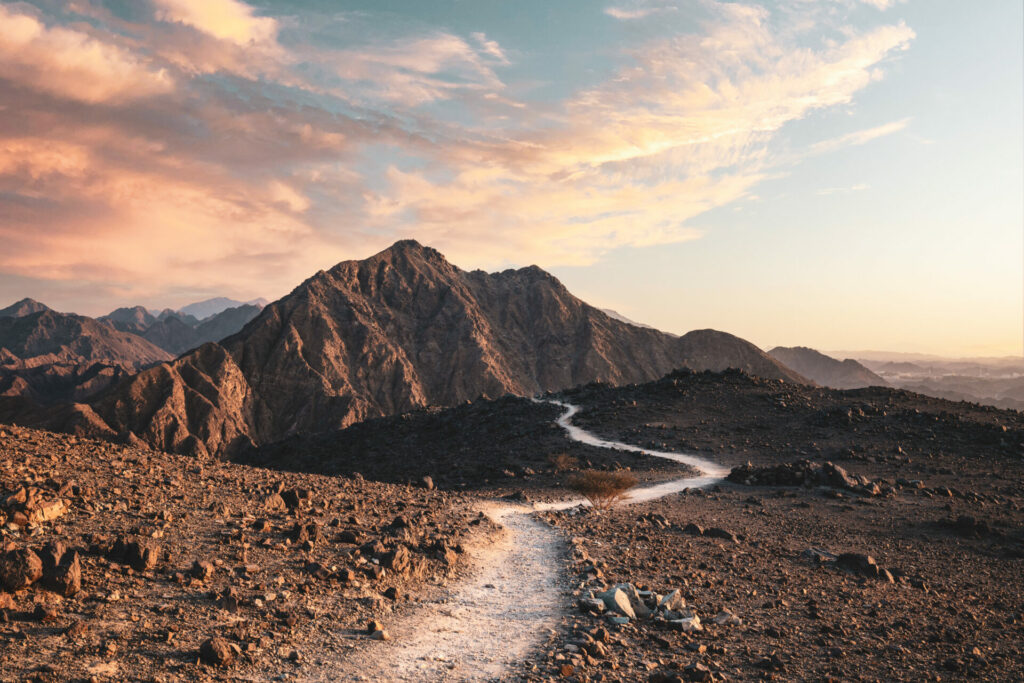In the latest move in the UAE’s exploration of humanity’s ‘final frontier’ of outer space the Rashid rover is expected to arrive on the surface of the Moon this month as part of the Emirates Lunar Mission.
Weighing in at just 10kg and the size of a chair, the exploratory vehicle is set to study its surroundings for at least one lunar day, or around 14 Earth days, using a high-resolution camera, a thermal imager, a microscopic imager, and a ‘Langmuir probe’ to sample the plasma environment prevailing just above the lunar surface.
The rover was name after the late Sheikh Rashid bin Saeed Al Maktoum and built in Dubai at the Mohammed Bin Rashid Space Centre. It will help scientists better understand the electrically charged environment on the lunar surface which is caused by the solar wind, a stream of particles flowing constantly from the sun.
It will also conduct experiments to understand more about lunar dust as razor-sharp lunar dust particles can stick to and erode spacesuits and equipment, causing operational problems for astronauts.
Nearside of the Moon
The Rashid rover blasted off for the Moon in late 2022 from Cape Canaveral Space Force Station as cargo on board a Falcon 9 SpaceX Rocket, in a lunar lander designed by Japanese company ispace as part of an international mission.
The spacecraft has travelled millions of kilometres on a low-energy transfer route, which involved using the Sun and Earth’s gravity to push itself towards the Moon.
The solar powered Rashid rover will spend most of the 14-day lunar daytime exploring the as yet only remotely explored Atlas Crater on the northeast of the Moon, the side that always faces the Earth.
If successful, this mission will add the UAE and Japan to the short list of nations – USA, Russia, and China – that have placed spacecraft on the moon.
Rashid Rover Launch
The Rashid rover’s launch followed the UAE Space Agency joining NASA and other space agencies in signing the Artemis Accords, which aimed to further collaboration on lunar exploration, in October 2020.
In other UAE space exploration projects, last month, Emirati astronaut Dr Sultan Al Neyadi arrived at the International Space Station (ISS) as part of NASA’s SpaceX Crew-6 Mission.

He will spend six months onboard the orbiting ISS science laboratory, marking the Arab world’s first long-duration space mission, and the UAE’s second mission to the ISS.
In 2019, astronaut Hazza Al Mansouri became the first Emirati to ever travel to space.
In preparation for his mission Dr. Al Neyadi received training alongside NASA astronauts at facilities across the US, including NASA’s Johnson Space Centre and SpaceX HQ.

Additional Emirati candidates, Mohammed Al Mulla and Nora Al Matrooshi, have begun their training alongside NASA crew. Chosen from over 4,000 applicants, Al Matrooshi will be the first female Arab astronaut.
Hope On Mars
In February 2021, the UAE became the first Arab nation and fifth country to reach Mars, coinciding with the year of the UAE’s 50th anniversary. After travelling 306 million miles in seven months, the UAE’s Hope Probe now orbits the Red Planet.
Hope is collecting and transmitting data about the planet’s atmosphere back to Earth, helping scientists create the first complete depiction of the Martian atmosphere.
‘Hope’ – or ‘Al Amal’ in Arabic – represents the culmination of knowledge transfer and development programmes between the UAE and international partners. Emirati engineers worked closely with scientists at US educational institutions such as University of Colorado Boulder, University of California, Berkeley and Arizona State University.
For the future, the UAE is setting its sights on the asteroid belt between Mars and Jupiter, the source of most meteorites that reach Earth’s atmosphere.
This new interplanetary mission was announced as part of the UAE’s ‘Projects of the 50’ – a series of innovative projects to accelerate the country into its next 50 years – and will be developed in partnership with the Laboratory for Atmospheric and Space Physics (LASP) at University of Colorado Boulder.
Space Age

The team driving the UAE’s space programme represents a new generation of Emirati engineers that consists of an equal number of men and women, including HE Sarah Al Amiri, UAE Minister of State for Public Education and Advanced Technology, and Heyam Al Blooshi, a UAE Space Agency engineer, who worked on the Hope Probe.
Sheikh Hamdan bin Mohammed, Crown Prince of Dubai, said that the lunar orbit insertion was a proud moment for the UAE.
‘We are proud of recording a new Emirati achievement with the entry of the Rashid rover into the orbit of the Moon,’ he tweeted when the Rashid rover launched late last year.‘With the support of our leaders and the intellect and determination of our youth, there is no limit to our ambitions in the field of space exploration.’
NASA and the Canadian Space Agency (CSA) has also just announced the four astronauts who will venture around the Moon on Artemis II, the first crewed mission on NASA’s path to establishing a long-term presence at the Moon for science and exploration.

They are Mission Commander Reid Wiseman, Pilot Victor Glover, Mission Specialist One Christina Hammock Kock and Mission Specialist Two Jeremy Hansen.
‘The Artemis II crew represents thousands of people working tirelessly to bring us to the stars. This is their crew, this is our crew, this is humanity’s crew,’ said NASA Administrator Bill Nelson.
‘NASA astronauts Reid Wiseman, Victor Glover, and Christina Hammock Koch, and CSA astronaut Jeremy Hansen, each has their own story, but, together, they represent our creed: E pluribus unum – out of many, one. Together, we are ushering in a new era of exploration for a new generation of star sailors and dreamers – the Artemis Generation.’
To read more exciting and breaking stories visit our NEWS section.









